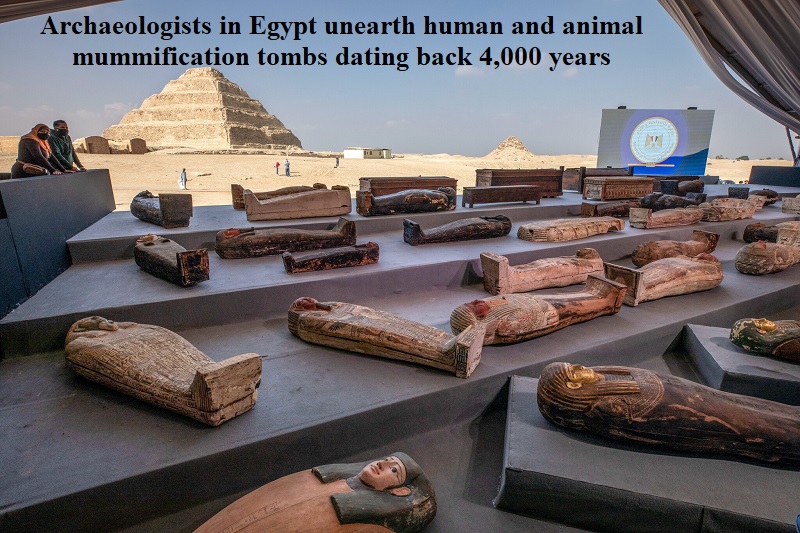
Archaeologists in Egypt made a significant discovery on Saturday as they uncovered workshops and tombs dating back 4,000 years in Saqqara, an ancient burial ground located around 30 kilometers (18.5 miles) south of Cairo, Egypt’s capital.
According to Egypt’s tourism and antiquities ministry, the workshops, where human and animal mummification took place, originate from ancient Egypt’s 30th dynasty, which ruled approximately 2,400 years ago.
Inside one of the workshops, researchers found several rooms with stony beds where the deceased would lie down for mummification, as per the ministry.
In addition to the mummification rooms, the excavation revealed clay pots and other objects that were likely used in the mummification process for both humans and sacred animals at the Saqqara site.
Mostafa Waziri, secretary-general of the Supreme Council of Antiquities, explained that Saqqara was once part of Memphis, Egypt’s ancient capital. He further mentioned that the discovery included the largest embalming workshop for humans and animals.
The workshops and tombs discovered date back to the 30th pharaonic dynasty (380 BC to 343 BC) and the Ptolemaic period (305 BC to 30 BC). The animal workshop, constructed with mud and stone floors, contained bronze tools associated with the mummification process. Additionally, five stone beds were found, indicating their use for mummifying the most sacred animals.
Among the tombs unearthed, two belong to priests. One dates back to the 24th century BC and is associated with Ne Hesut Ba, who held the positions of head of scribes and priest of the gods Horus and Maat in the fifth dynasty of the Old Kingdom. The other tomb is attributed to a Qadish priest named Men Kheber from the 18th dynasty (around 1400 BC). This rock-carved tomb featured depictions of the priest in various positions and included a 1-meter-long alabaster statue.
The Egyptian government sees these archaeological findings as an opportunity to boost tourism, a sector that has faced challenges due to political instability, the COVID-19 pandemic, and fallout from the conflict in Ukraine. By highlighting new discoveries to international media and diplomats, Egypt aims to revive its tourism industry. In the second half of 2022, tourism revenues increased by 25.7% compared to the previous year, reaching $7.3 billion, as reported by economic data.

Post Your Comments